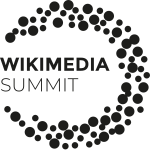Wikimedia Summit 2022/Event-report/Description of outcome and participant evaluation
| Overview | Outcome and evaluation | Lessons learned | Financial Report |
In this section, we look at some of the desired outcomes defined by the Summit program team prior to the event and assess our success based on the results of the participant evaluation survey. On a general note, we see the satisfaction with session formats and the agreed benefits of the Summit is a bit lower for remote participants than for on-site participants.
Welcome, Onboard, & Include Newcomers to Movement Strategy
editNewcomers are welcomed, onboarded and find their agency
edit

This data invites us to pay more attention to the onboarding of newcomers in future Summits and to explore initiatives such as a mentoring or peer-matching program between newcomers and more experienced Summit participants.
A greater diversity of voices, ideas, cultures, realities are incorporated into Movement governance and structural reform, Movement Strategy implementation, and partnerships.
edit
The followings are a few examples of cooperation enabled by the Summit:
- The Capacity Exchange grew and found a fiscal home during the Summit.
- The self-organized regional meet-ups on Friday evening helped Wikimedia Europe define their next steps.
- The Summit served as a major opportunity for the MCDC to reach out to the affiliates and connect with the Movement.
Build Partnerships & Coordination for Movement Strategy Implementation
editMapping of who is doing what / where
editDay One of the Summit, which was rated most positively by participants, was used to collect valuable information on ongoing implementation activities. We counted over 160 activities entered into our Baserow database by the participants. The Wikimedia Foundation is currently working on how to develop Baserow and use it to its full potential for the Movement.
Participants leave with mutual support, ideas, clarity for strategic plans/planning that aligns with Movement Strategy.
edit
Ensure Equity in Decision-Making
editParticipants engage with governance, structural, and resource-distribution models and practices.
editIn Day Two different models and practices were introduced and discussed in-depth in breakout sessions. A detailed report on what has been discussed can be found in the event documentation.
